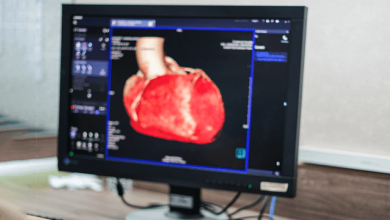Search results
Author(s):
Michael L Ridner
,
Mark E Davis
Added:
3 years ago
Since 1999, cardiac computed tomographic angiography (CCTA) has evolved into the most innovative approach to cardiac imaging to emerge in over 30 years. The adoption and application of this remarkable technology represents a true revolution in the evaluation of patients for cardiac problems. The evaluation of patients with potential cardiac problems traditionally uses a variety of non-invasive or…
View more
Author(s):
Glenn I Fishman
,
Richard I Levin
Added:
3 years ago
Abstract
Recently, we had the opportunity to review the progress that has been made in the field of cardiovascular disease over the past century in The FASEB Journal and, based on those thoughts, in this article we predict what may transpire in this 'century of biology'. Although it is true that 'the best way to predict the future is to invent it', we gaze through the prism of modern…
View more
Author(s):
Brian Pearlman
,
Taffere Mihretu
Added:
3 years ago
Congestive heart failure (CHF) is a rapidly growing public health problem, affecting nearly five million people in the US alone, with nearly half a million new cases annually.The prevalence of CHF is highest in the elderly; ten out of every 1,000 persons over age 65 are affected. Anemia has been considered a modifiable comorbidity in heart failure. Utilizing the World Health Organization (WHO)…
View more
Author(s):
Marc P Allard-Ratick
,
Pratik Sandesara
,
Arshed A Quyyumi
,
et al
Added:
3 years ago
Historically, HDL cholesterol (HDL-C) has been inversely associated with adfverse cardiovascular outcomes such as MI, stroke, and cardiovascular death.1–3 This led to widespread belief that HDL-C, in addition to LDL cholesterol (LDL-C), was a modifiable risk factor for cardiovascular disease.
However, efforts to increase HDL-C in high-risk patients with well-controlled LDL-C values have not…
View more
Author(s):
Domenic A Sica
Added:
3 years ago
A not inconsequential number of therapeutic agents or chemical substances can increase blood pressure (BP). The degree to which BP increases determines whether a specific definitional threshold has been crossed, at which time the patient is designated as having become hypertensive. Drugs that cause hypertension do so by either causing vasoconstriction, increasing extracellular fluid (ECF) volume,…
View more
Author(s):
Giovanni Torsello
,
Konstantinos P Donas
Added:
3 years ago
Stroke is a leading cause of death and disability in the developed world.1 More than 750,000 strokes occur in the US annually,1 and one-third of these patients die during the first few months after their strokes. Acute carotid syndrome (ACS) is defined as a set of signs and symptoms linked to neurological deficits (transient ischemic attack [TIA] or ischemic stroke) caused by carotid occlusive…
View more
Author(s):
Jennifer N Avari
,
Edward K Rhee
Added:
3 years ago
Fetal tachyarrhythmias occur in approximately 0.4-0.6% of all fetuses.1-3 Normal fetal heart rates range from 120-160 beats per minute (bpm), with rates greater than 180bpm indicative of tachycardia.4-7 Usually, fetal arrhythmias are isolated findings; however, 5% of fetuses will also have congenital heart disease,8,9 such as Ebstein's anomaly, atrioventricular canal, hypoplastic left heart…
View more
Author(s):
Deepak Padmanabhan
,
Ameesh Isath
,
Bernard J Gersh
Added:
3 years ago
Endovascular techniques for renal denervation (RDN) as a treatment for hypertension were initially highly encouraging with reductions in blood pressure (BP) in the range of 30 mmHg.1 However, these high expectations received a major setback following the unexpected results of the sham-controlled Renal Denervation in Patients With Uncontrolled Hypertension (SYMPLICITY HTN-3) trial. This promising…
View more
Author(s):
G Michael Felker
,
Christopher B Granger
Added:
3 years ago
Chronic heart failure is common, disabling and deadly. It affects approximately five million people in the US and accounts for over one million hospitalizations annually. Despite continued improvements in heart failure therapy, mortality over five years is approximately 50%.This article summarizes significant recent developments in pharmacologic and device therapy for heart failure.
Angiotensin…
View more
Author(s):
Frank J Rybicki
Added:
3 years ago
Most advances in cardiac computed tomography (CT), particularly coronary CT angiography (CTA), have come from the development of protocols consistent with rapid incremental improvements in CT technology. The evolution of cardiac CT from early technology has been paralleled with evolving protocols that have extended cardiac CT beyond the imaging of coronary arteries alone: current applications…
View more











 « First
« First